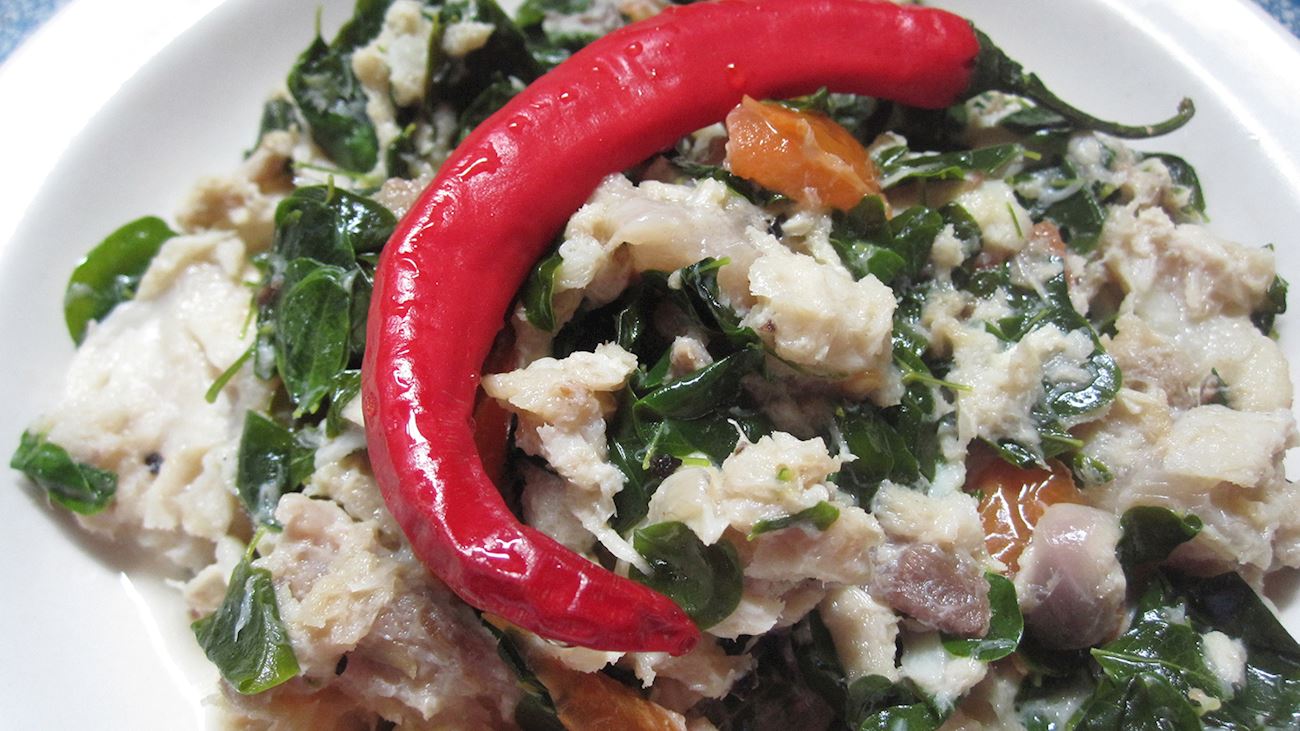MAIN INGREDIENTS
Pinangat is a popular Filipino stew that is prepared in two main versions. The sour version is prepared with fish, bilimbi, tamarind, and vinegar, while the Bicol region version is prepared with coconut milk, taro leaves, hot chili peppers, and fish (sardines, catfish, or tuna).
Bicol region is abundant with taro leaves, so it is unsurprising that taro is a key ingredient in many Bicolano delicacies. Pinangat is served with a variety of toppings, and is usually ladled over rice. Cooking the dish is an easy process that only requires combining all of the ingredients and cooking them together, which is one of the main reasons for its popularity.
MOST ICONIC Pinangat
View moreMAIN INGREDIENTS
Kinunot is a traditional dish originating from the Bicol province. The dish is made with a combination of fish (usually stingray or shark), coconut milk and cream, onions, garlic, malunggay (moringa) leaves, ginger, vinegar, hot chili peppers, and fish sauce.
The fish is flaked and mixed with the other ingredients which are then cooked in coconut cream sauce with spices. Kinunot is very popular in Bicol because chili peppers, coconuts, and seafood are abundant in the area. It's often served with steamed white rice on the side.
MAIN INGREDIENTS
Sinanglay is a traditional dish originating from the Bicol area. The dish is usually made with a combination of fish (usually tilapia), tomatoes, onions, garlic, ginger, chili peppers, bok choy, coconut milk, and salt. The fish is typically stuffed with onions, tomatoes, ginger, and garlic.
It is then wrapped in leafy greens (such as bok choy, mustard greens, or taro leaves) and cooked in a mixture of coconut milk, chili peppers, and salt. Sinanglay is simmered until the liquid is reduced, and it's then served with steaming hot rice on the side.
TasteAtlas food rankings are based on the ratings of the TasteAtlas audience, with a series of mechanisms that recognize real users and that ignore bot, nationalist or local patriotic ratings, and give additional value to the ratings of users that the system recognizes as knowledgeable. TasteAtlas Rankings should not be seen as the final global conclusion about food. Their purpose is to promote excellent local foods, instill pride in traditional dishes, and arouse curiosity about dishes you haven’t tried.










